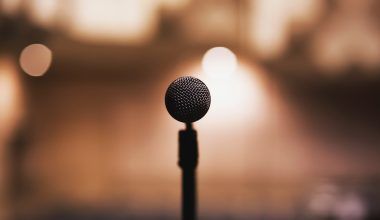Have you ever wondered what exactly an EP is and how many songs it should include? For musicians and fans alike, understanding these concepts is crucial. EPs, or Extended Plays, are shorter than full-length albums but longer than singles, bridging the gap between the two. In this blog, we’ll dive deep into everything you need to know about EPs: their structure, history, and why they are a go-to format for many artists.
Let’s explore the world of EPs and answer the question: how many songs does an EP have?
What is an EP?
An EP (Extended Play) is a type of musical release that contains more content than a single but is not as lengthy as a full album. The term “extended play” refers to its extended length compared to a standard single. It is often used by artists to showcase their creativity without committing to a full album.
Think of it this way: an EP is like a teaser of what an artist can do. It allows listeners to enjoy a few tracks while keeping them excited for more.
How Many Songs Are in an EP?
Typically, an EP includes 3 to 5 songs, though some may stretch to 7 or 8 tracks. However, the defining feature of an EP is not just the number of songs but also its total playtime. An EP usually runs for 15 to 30 minutes.
Why the Song Limit?
The idea is to keep the content concise and engaging. For new artists, an EP serves as a perfect way to make a strong first impression without overwhelming listeners.
EP vs. Album vs. Single: What’s the Difference?
Understanding how an EP stands out requires comparing it with albums and singles.
1. Single
- Length: 1-2 songs
- Playtime: Around 5-10 minutes
- Purpose: To promote a hit track or test the waters.
2. EP
- Length: 3-7 songs
- Playtime: 15-30 minutes
- Purpose: Offers a taste of an artist’s style and versatility.
3. Album
- Length: 8+ songs
- Playtime: 30-60+ minutes
- Purpose: Comprehensive storytelling and full artistic expression.
Each format has its unique role, but the EP hits the sweet spot for creativity and affordability.
Why Do Artists Release EPs?
Releasing an EP can be strategic. Here are some reasons why artists love EPs:
- Budget-Friendly
Producing fewer songs reduces costs, making it ideal for independent musicians. - Test New Styles
EPs allow artists to experiment with new sounds and gauge audience reactions. - Build Hype
Many artists release EPs as a precursor to a full album. - Flexibility in Content
EPs are perfect for thematic collections or experimental projects.
A Brief History of EPs
The concept of the EP dates back to the vinyl era in the 1950s. Back then, EPs were shorter records played at a higher speed (45 RPM) and often used to promote singles. Over time, they became a standalone format for artists to share their work.
In the digital age, EPs have gained popularity on platforms like Spotify, Apple Music, and YouTube, making them accessible to global audiences.
How to Decide the Right Length for Your EP
If you’re an artist, deciding how many songs your EP should have depends on several factors:
- Genre Expectations
Genres like hip-hop may include longer EPs, while indie might lean toward shorter ones. - Theme or Story
If your EP tells a story, consider how many tracks are needed to complete it. - Audience Attention Span
Keep it concise to maintain engagement. Quality trumps quantity.
EPs in the Digital Age
In today’s streaming-driven world, EPs have become even more versatile. Platforms like Spotify categorize EPs by their playtime and track count, ensuring artists get the correct exposure.
Pro Tip for Artists:
Include your best tracks in your EP to maximize impact, as EPs often determine an artist’s first impression.
Examples of Famous EPs
Some of the most celebrated EPs include:
- “Hail to the Thief: The Gloaming” by Radiohead
A compact showcase of their evolving sound. - “Feel Good Now” by The Front Bottoms
Captures the raw energy of the band. - “Sour” by Olivia Rodrigo (as a teaser)
Demonstrates how EP-like releases can build anticipation for albums.
How to Market Your EP Effectively
Once your EP is ready, marketing it is the next big step. Here’s how you can do it:
- Leverage Social Media
Share behind-the-scenes stories, snippets, and teasers. - Collaborate with Influencers
Get your EP promoted by influencers in your genre. - Submit to Playlists
Many streaming platforms have editorial playlists specifically for EPs.
Frequently Asked Questions About EPs
1. Can an EP have 2 songs?
While rare, some EPs may feature only 2 tracks if the total playtime exceeds 10 minutes.
2. What is the maximum length of an EP?
Generally, an EP should not exceed 30 minutes.
3. Are EPs only for new artists?
Not at all. Established artists also use EPs for experimental projects or bonus content.
Conclusion
So, how many songs does an EP have? Usually, 3 to 7 tracks, but the playtime and purpose play a big role in defining it. Whether you’re a budding artist or a music fan, EPs are a fantastic way to explore creativity and enjoy fresh sounds.
If you’re an artist ready to create an EP, remember that the key lies in balancing quality with quantity. Make every track count, and let your music shine!
For further reading, explore these related articles:
- Understanding the 1,000 Streams Rule on Spotify: What Artists Need to Know
- One-Month Free Trial for All Deliver My Tune Services
For additional resources on music marketing and distribution, visit Deliver My Tune.






